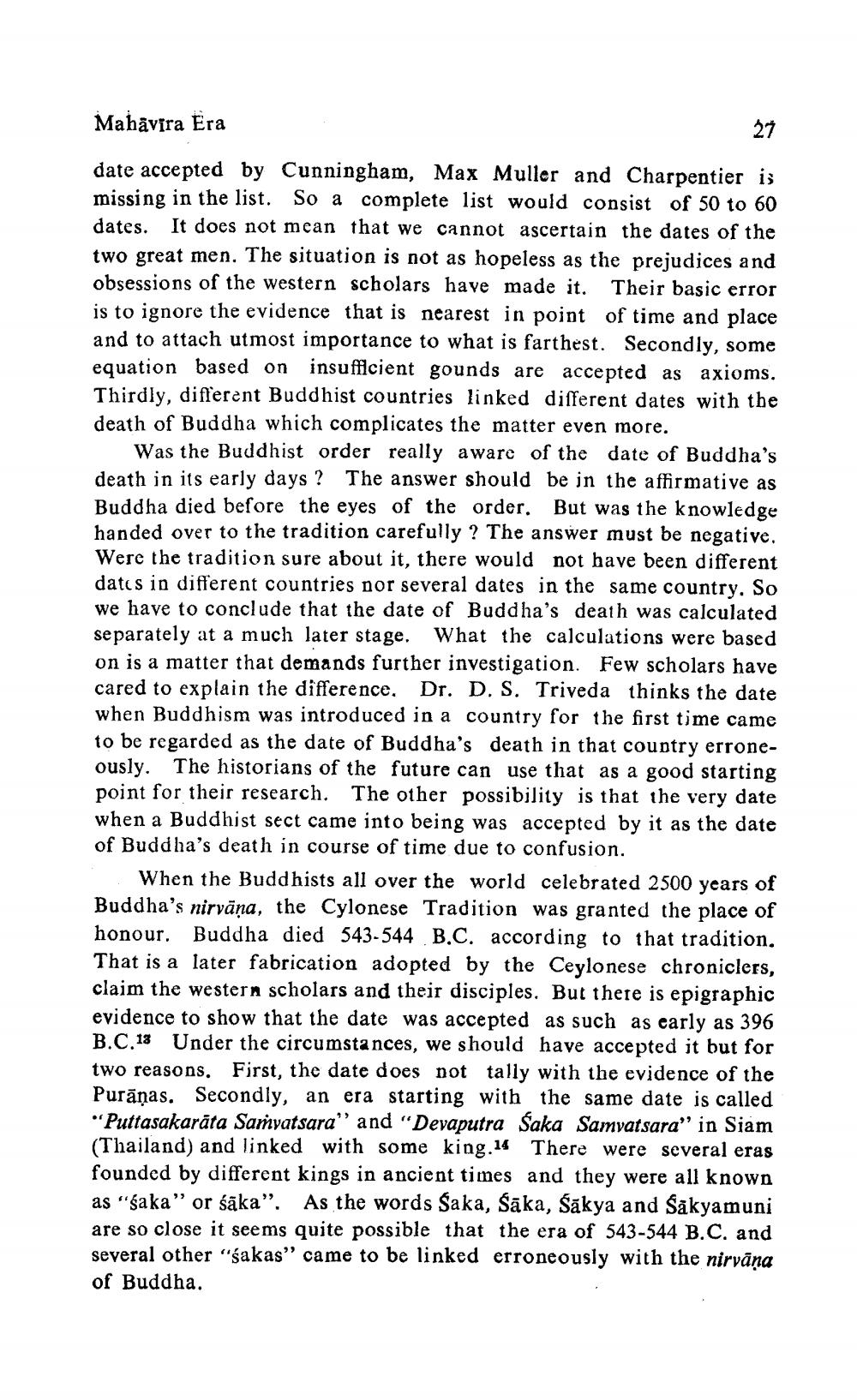________________
Mahavira Era
27
date accepted by Cunningham, Max Muller and Charpentier is missing in the list. So a complete list would consist of 50 to 60 dates. It does not mean that we cannot ascertain the dates of the two great men. The situation is not as hopeless as the prejudices and obsessions of the western scholars have made it. Their basic error is to ignore the evidence that is nearest in point of time and place and to attach utmost importance to what is farthest. Secondly, some equation based on insufficient gounds are accepted as axioms. Thirdly, different Buddhist countries linked different dates with the death of Buddha which complicates the matter even more.
Was the Buddhist order really aware of the date of Buddha's death in its early days? The answer should be in the affirmative as Buddha died before the eyes of the order. But was the knowledge handed over to the tradition carefully? The answer must be negative. Were the tradition sure about it, there would not have been different dates in different countries nor several dates in the same country. So we have to conclude that the date of Buddha's death was calculated separately at a much later stage. What the calculations were based on is a matter that demands further investigation. Few scholars have cared to explain the difference. Dr. D. S. Triveda thinks the date when Buddhism was introduced in a country for the first time came to be regarded as the date of Buddha's death in that country erroneously. The historians of the future can use that as a good starting point for their research. The other possibility is that the very date when a Buddhist sect came into being was accepted by it as the date of Buddha's death in course of time due to confusion.
When the Buddhists all over the world celebrated 2500 years of Buddha's nirvana, the Cylonese Tradition was granted the place of honour. Buddha died 543-544 B.C. according to that tradition. That is a later fabrication adopted by the Ceylonese chroniclers, claim the western scholars and their disciples. But there is epigraphic evidence to show that the date was accepted as such as early as 396 B.C.13 Under the circumstances, we should have accepted it but for two reasons. First, the date does not tally with the evidence of the Purāņas. Secondly, an era starting with the same date is called "Puttasakarāta Samvatsara" and "Devaputra Saka Samvatsara" in Siam (Thailand) and linked with some king.14 There were several eras founded by different kings in ancient times and they were all known as "saka" or saka". As the words Saka, Śāka, Śākya and Sakyamuni are so close it seems quite possible that the era of 543-544 B.C. and several other "śakas" came to be linked erroneously with the nirvāṇa of Buddha.




